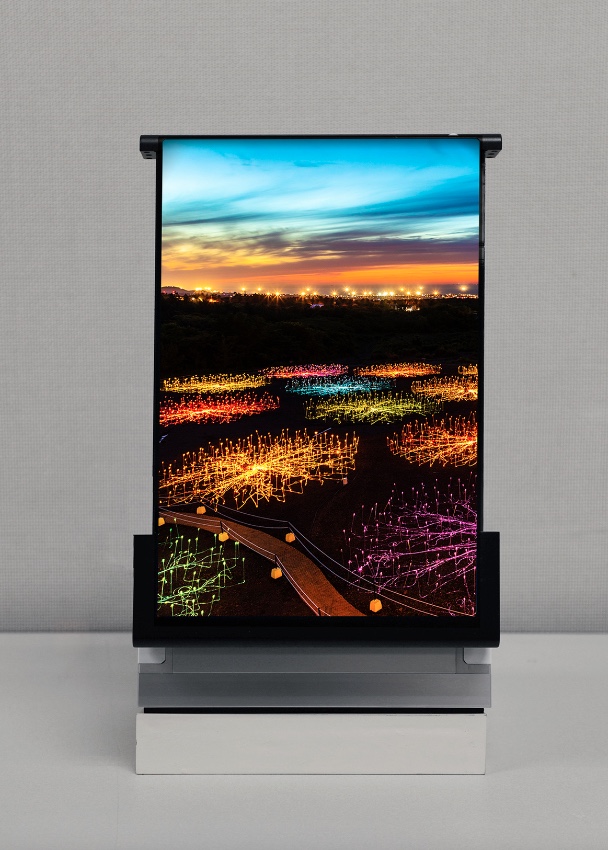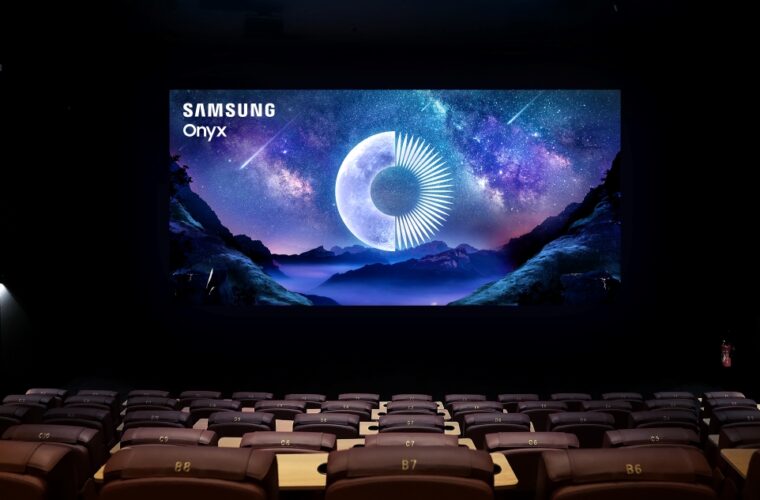At the SID 2023 conference in California, the Samsung display announced a 12.4-inch rollable Oled display for mobile devices. The panel, called Rollable Flex, has a minimum width of 49 mm and can extend up to 254.4 mm – about five times as much, unlike what we have seen with other rollable panels, which generally stop at three times as much. Samsung explains that it achieved this by rolling up the panel on a circular axis inspired by the shape of parchment. This way, a large display becomes very easy to carry, even in a pocket.
Of course, it remains an end for now, in the sense that there are no plans to implement it in a commercial device. This is a common thread in the idea of rollable displays – although several have been presented over the past few years, few concrete products use them. In the mobile sphere, only one case can be cited, which is also borderline: LG had developed the Rollable a few years ago and planned to sell it regularly but closed its smartphone division shortly before.

Just like ancient parchments
In any case, Samsung presented several other panels at the event, notably the Flex In & Out. These are displays similar to those seen in smartphones such as the Galaxy Z Fold or the Pixel Fold but can be folded either outwards or inwards – a ‘fusion’ between the Z Fold and the Huawei Mate Xs. A smartphone with this type of panel could be the best of both worlds: guaranteed display protection when you put it in your pocket and easier construction because you don’t need a secondary/outer display. And that’s not all. There are also Flex Hybrid and Slidable Flex Solo.
The former can be folded and rolled up simultaneously so that wider displays can be implemented even on compact devices, while the latter, aimed at the tablet world, can expand from 13″ to 17″. Both panels were presented a few months ago and were shown during CES 2023. Samsung Display will also unveil a new Sensor OLED Display that can recognize fingerprints anywhere on the screen and even check cardiovascular health. Typically, smartphone fingerprint sensors are attached under the panel as a separate module from the panel, but Samsung Display embeds the light-sensing organic photodiode (OPD) into the panel itself.
Sensor OLED Display can measure the user’s heart rate, blood pressure and stress level simply with the touch of two fingers. OLED light is reflected differently depending on the contraction and relaxation of the blood vessels inside the finger. When it returns to the panel, the OPD recognizes it and converts it into health information. Samsung Display is the first to unveil panel technology that can simultaneously sense fingerprints and biometric information. “To accurately measure a person’s blood pressure, it is necessary to measure the blood pressure of both arms,” said a Samsung Display. “The Sensor OLED display can simultaneously sense the fingers of both hands, providing more accurate health information than existing wearable devices.”



